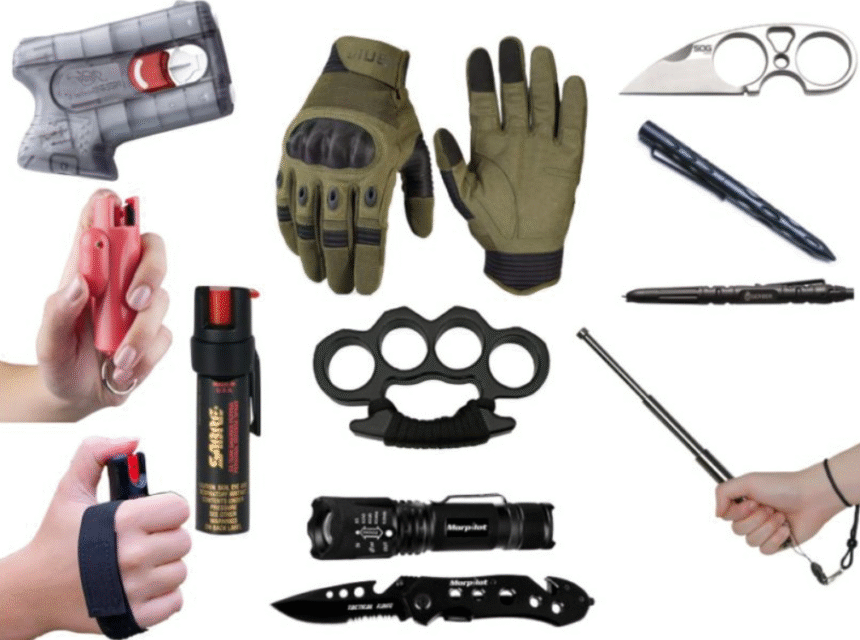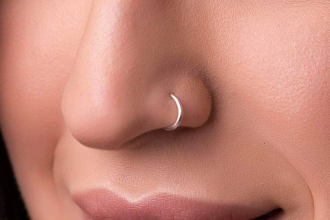In today’s world, safety is something we all think about. Whether you’re walking to your car at night, traveling to a new place, or simply going about your daily routine, having the right personal protection tools can give you peace of mind.
- Pepper Spray: A Powerful First Line of Defense
- Personal Alarms: Calling for Help Loud and Clear
- Stun Guns: High Voltage Defense
- Tactical Pens: Writing with Power
- Self-Defense Keychains: Protection at Your Fingertips
- Pocket Knives: Traditional but Reliable
- What to Consider When Choosing a Protection Tool
- Ease of Use
- Portability
- Legal Restrictions
- Confidence and Comfort Level
- Durability and Reliability
- Environment and Daily Activities
- Personal Protection for All Ages and Lifestyles
- Students
- Parents and Caregivers
- Seniors and the Elderly
- Travelers
- Night Workers and Commuters
- Training and Practice: Know Your Tools
- Stay Safe, Prepared, and Choose the Right Personal Protection Tools
These tools are not just for law enforcement or security professionals they’re for anyone who wants to feel more secure. But with so many options out there, how do you choose the right one?
This guide will help you understand the different types of personal protection tools and how to pick the best one for your needs.
Pepper Spray: A Powerful First Line of Defense
Pepper spray is one of the most popular personal protection tools. It’s small, easy to carry, and can stop an attacker by causing temporary blindness, intense eye irritation, pain, and breathing difficulty.
One of the main advantages of pepper spray is how simple it is to use. You don’t need special training just point and spray. It’s also effective from a short distance, giving you a window to escape. Plus, it’s affordable and widely available.
However, there are a few downsides. It requires good aim to work well, and in windy conditions, it might blow back toward you. Also, pepper spray may not work effectively on individuals under the influence of drugs or alcohol, which can make them less responsive to pain.
Personal Alarms: Calling for Help Loud and Clear
Personal alarms are great for people who want to avoid physical confrontation. These small devices emit a loud sound-often over 120 decibels-when triggered, drawing attention and possibly scaring off an attacker.
The biggest benefit of personal alarms is that they’re incredibly easy to use. You simply pull a pin or press a button. They’re also safe for people of all ages, including children and the elderly. Because they don’t require physical contact, you don’t have to get close to your threat.
On the other hand, personal alarms don’t physically stop an attacker. They only draw attention, which might not always be enough, especially in isolated or noisy environments where others might not hear the alarm.
Stun Guns: High Voltage Defense
Stun guns are handheld devices that deliver a high-voltage electric shock to an attacker. They disrupt muscle function and cause intense pain without permanent injury.
The pros of stun guns include strong stopping power. They can work even through clothing, making them more reliable in close situations. Many models offer fast activation and are designed for easy grip and control.
The cons include the need for close contact.
You have to be within arm’s reach to use them, which can be risky. They also require batteries or charging, so maintenance is important.
In some states or cities, stun guns are illegal or restricted, so be sure to check your local laws. A good place to find a variety of legal and tested stun guns is Kombativ.com, which also offers helpful information on proper use.
Tactical Pens: Writing with Power
At first glance, a tactical pen looks like any ordinary pen. But these tools are made from strong metals like aircraft-grade aluminum and can be used to strike an attacker or break glass in an emergency.
The advantage of a tactical pen is that it’s discreet and legal in almost all places, including airplanes and schools. It serves multiple purposes-you can write with it, defend yourself, or use it in emergencies to break a window. It’s also easy to carry and fits into a pocket, purse, or bag.
However, using a tactical pen effectively requires some practice. Striking properly takes technique and awareness. Also, it has a limited reach and may not be as effective as other tools when dealing with a larger or more aggressive attacker.
Self-Defense Keychains: Protection at Your Fingertips
Self-defense keychains come in many forms, from sharp cat-ear designs to mini batons or reinforced knuckles. They’re small, stylish, and attach directly to your keyring.
One of the biggest benefits of self-defense keychains is their accessibility. Because they’re attached to your keys, you’re likely to have them within reach at all times. They’re lightweight, affordable, and easy to conceal.
Many people also feel empowered just by having something readily available.
On the downside, these tools require close contact to be effective. You have to be within arm’s reach of your attacker, which can be risky. Additionally, some designs-especially those with sharp points might be illegal in certain areas.
Pocket Knives: Traditional but Reliable
Pocket knives have been used for protection, survival, and utility for many years. Today’s models are sleek, safe, and built for more than just defense.
The main advantage of carrying a pocket knife is its multi-functionality. It can be used for cutting, opening items, or self-defense. Most models are durable, compact, and designed with safety features like blade locks and grips. In trained hands, they’re a powerful deterrent.
However, they come with a few concerns. A knife requires skill and confidence to use effectively and safely. They’re also more heavily restricted than other tools and may be banned from public buildings, airports, or schools.
What to Consider When Choosing a Protection Tool
Choosing the right tool depends on your lifestyle, comfort level, and the places you visit. Here are a few things to think about:
Ease of Use
This is one of the most important factors. In a moment of fear or stress, your body may shake or your brain may freeze. That’s why your protection tool needs to be simple and fast to use. If a tool requires too many steps, buttons, or settings, it might not be practical in an emergency.
Portability
This is another key point. Your tool won’t help if you leave it at home or in your car. It has to be small enough to carry with you every day. Think about how and where you’ll carry it. Will it clip onto your keychain, slip into your purse, or fit into your pocket? The more comfortable it is to carry, the more likely you are to keep it with you.
Legal Restrictions
Legal Restrictions should never be overlooked. Different states, cities, and even schools and workplaces have rules about what you can carry. Some places restrict stun guns, knives, or certain sprays. Before buying a protection tool, check your local laws.
Confidence and Comfort Level
These matter just as much as the features of the tool itself. Ask yourself, “Would I be comfortable using this in a stressful situation?” A protection tool is only useful if you’re willing and able to use it. For instance, some people are uncomfortable with knives or stun guns, even though they’re effective.
Durability and Reliability
Durability and Reliability shouldn’t be overlooked. You want a tool that works every time, not something that breaks when you need it most. Before you buy, read reviews and choose trusted sources like Kombativ.com, which offers tools designed for real-world use and performance.
Environment and Daily Activities
These also play a big role. Your tool should match the places you go and the activities you do. Think about your surroundings, how much space you have to react, and how close a threat might come.
Personal Protection for All Ages and Lifestyles
Personal protection tools aren’t just for one type of person. Everyone regardless of age, lifestyle, or job deserves to feel safe and prepared. Let’s take a closer look at how personal protection tools can work for different groups of people and situations.
Students
Students, especially those living on or near college campuses, often walk alone at night or travel to unfamiliar places. This makes them vulnerable to threats like theft, harassment, or assault.
Parents and Caregivers
Parents have the added responsibility of keeping not just themselves safe, but also their children. Whether you’re walking your child to school, grocery shopping, or taking the family on vacation, it helps to carry a tool that can offer protection in a wide range of situations.
Seniors and the Elderly
Senior citizens may face extra challenges when it comes to personal safety. Slower movement, reduced strength, and the risk of falling can make it harder to react in a crisis. That’s why older adults need tools that are lightweight, simple to use, and require very little force.
Travelers
Traveling can be exciting, but it also exposes you to unfamiliar places and situations. Whether you’re traveling for business, going on vacation, or backpacking in a new country, safety should be part of your planning.
Night Workers and Commuters
If you work late hours such as in healthcare, delivery, security, or hospitality likely spend time in dark parking lots or on empty streets. This makes personal protection tools an essential part of your daily gear.
Training and Practice: Know Your Tools
Having a tool won’t help if you don’t know how to use it. Regular practice builds muscle memory, which is vital in stressful situations.
Here are some tips:
- watch tutorials
- attend self-defense classes
- Practice drawing and activating your tool quickly
- Learn basic awareness techniques
Websites like Kombativ.com often include how to videos and tips to help users get the most out of their tools safely and effectively.
Stay Safe, Prepared, and Choose the Right Personal Protection Tools
Choosing the right personal protection tools helps you feel more confident, secure, and prepared in your daily life. Remember, tools are most effective when paired with awareness and regular practice. By investing in your safety and learning how to protect yourself, you take control of your security.
Interested in learning more? Browse our other blog posts to gain insights into a range of topics.















